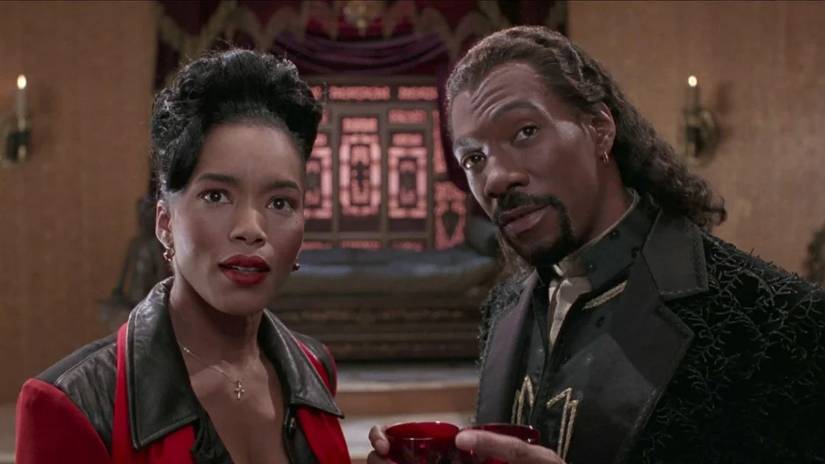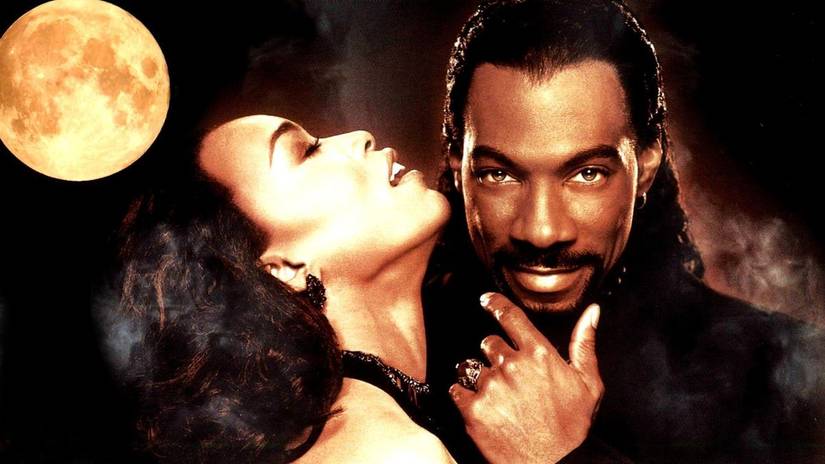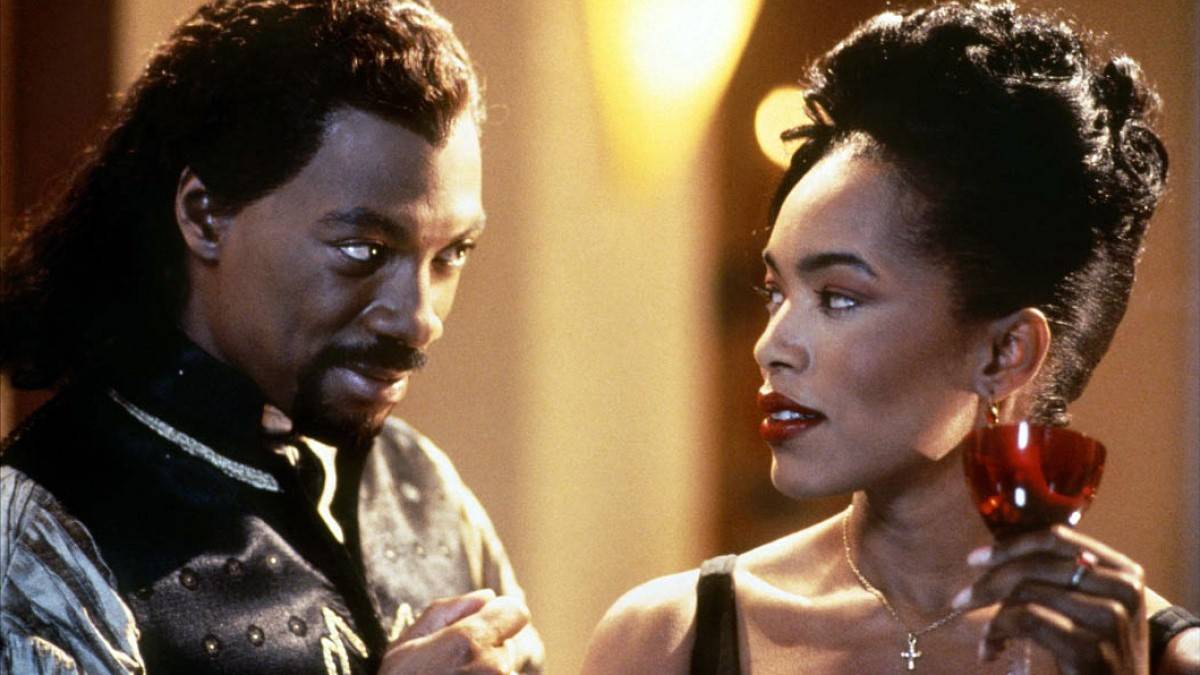Ryan Coogler’s Sinners may have made Black vampires cool again, but the roots of Black vampire cinema stretch back to the Blaxploitation era, most iconically with 1972’s Blacula. In that film, William Marshall’s character is bitten by Dracula and, even worse, cursed with the demeaning name “Blacula.” Originally written as a jive-talking stereotype, Marshall transformed the role into something regal, giving his character an 18th-century backstory as Mamuwalde, a proud African prince.
Decades later, Eddie Murphy seemed to take a cue from Marshall, enriching his own character’s mythology in Wes Craven’s take on the Black vampire subgenre: Vampire in Brooklyn. Murphy’s Maximillian is a descendant of Dracula whose ancestors fled to Egypt, and later to the Bermuda Triangle, after being hunted to the brink of extinction. Vampire in Brooklyn proves Black vampire stories can be funny, frightening, and thought-provoking all at once, earning its place in the canon by balancing all three while honoring the subgenre’s legacy.
Released 30 years ago on Oct. 27, 1995, Vampire in Brooklyn is currently streaming on Tubi, making it an essential watch if you need a little comedy with your scares this Halloween.
Like Prince Akeem in Coming to America (Murphy’s 1988 masterpiece), Maximillian is drawn to New York City. But instead of journeying from Zamunda to Queens, he emerges from the Bermuda Triangle into Brooklyn, seeking to find and secure the continuation of his vampire lineage with an offspring of his tribe.
Maximillian arrives in New York aboard a ghost ship whose crew has been mysteriously slaughtered, a nod to Nosferatu. The vessel is discovered by ship inspector Silas Green (John Witherspoon) and his nephew Julius Jones (Kadeem Hardison), two of the film’s funniest characters. Silas then witnesses a black wolf leap from the ship, dart into an alley, and morph into a man — like Michael Jackson’s Panther Dance from the extended Black or White video. Funky Blaxploitation-style music kicks in, setting the tone for a film that handily balances horror and humor. The Black or White music video was directed by John Landis, best known for blending comedy and horror in films like the 1981 classic An American Werewolf in London. The iconic werewolf transformation scene from that movie, along with Jackson’s transformation in the music video, directly inspired Craven’s use of a similar moment here.

Photo: Paramount Pictures
Fresh off his final entry in the Nightmare on Elm Street series, Craven was eager to break from his horror reputation and make a more blended comedy (his next film after Vampire in Brooklyn was Scream, which mined horror tropes for both laughs and genuine scares). Meanwhile, Murphy wanted to subvert expectations by diving into a straight horror rooted in Dracula lore.. The clash of those creative goals explains the film’s exposition-heavy opening of Max’s origins and its generally sluggish start. But once the movie clicks into high gear, it opens up to its strengths — like its eclectic cast.
Angela Bassett, as the object of Maximillian’s affection, plays detective Rita Veder, whose dynamic with her partner and love interest, detective Justice (Allen Payne), adds a crime-drama edge to the story. One of Black cinema’s most acclaimed actresses, Bassett delivers a commanding performance alongside Payne, a familiar face from the era. Meanwhile, Murphy spends most of his screen time with Kadeem Hardison, forming a hilarious Abbott-and-Costello-style duo as Hardison’s Julius Jones becomes Max’s undead lackey. (Watching Julius sink deeper and deeper into his ghoulish role as his skin decays throughout the film is a highlight of how Murphy’s usual bag of tricks elevates the comedy and horror, even when utilized by other actors.)

Image: Paramount Pictures
When Max and Rita’s paths intertwine and Murphy and Bassett finally share the screen, the film hits its stride — the tension heightens, the scares intensify, and their darkly seductive chemistry takes center stage. Max’s plan is to take away everything Rita has in her life and then swoop in. He kills her roommate, drives a wedge in between her and her partner, and even uses Nutty Professor-esque make-up effects to disguise himself as a preacher and undermine her faith.
As the story progresses, it becomes increasingly Gothic, featuring transformations and revelations of origins. This leads to a third act filled with temptation, as mortality and damnation hang in the balance. The film ends with a stinger teasing a potential sequel, one that might have materialized had the movie performed better. Vampire in Brooklyn earned a modest box office return and received mostly negative reviews upon release. Over time, it found new life as a cult favorite, with critics later applauding Craven’s direction, the electric chemistry between Murphy and Bassett, and its sharp blend of horror and comedy. The film flashes moments of brilliance that might have shone brighter had everyone involved been aligned on a unified vision, rather than delivering the tonal hodgepodge audiences received. Still, Vampire in Brooklyn has rightfully earned its place in the canon of Black horror, an overlooked but influential entry defined by its daring approach and unforgettable performances.

